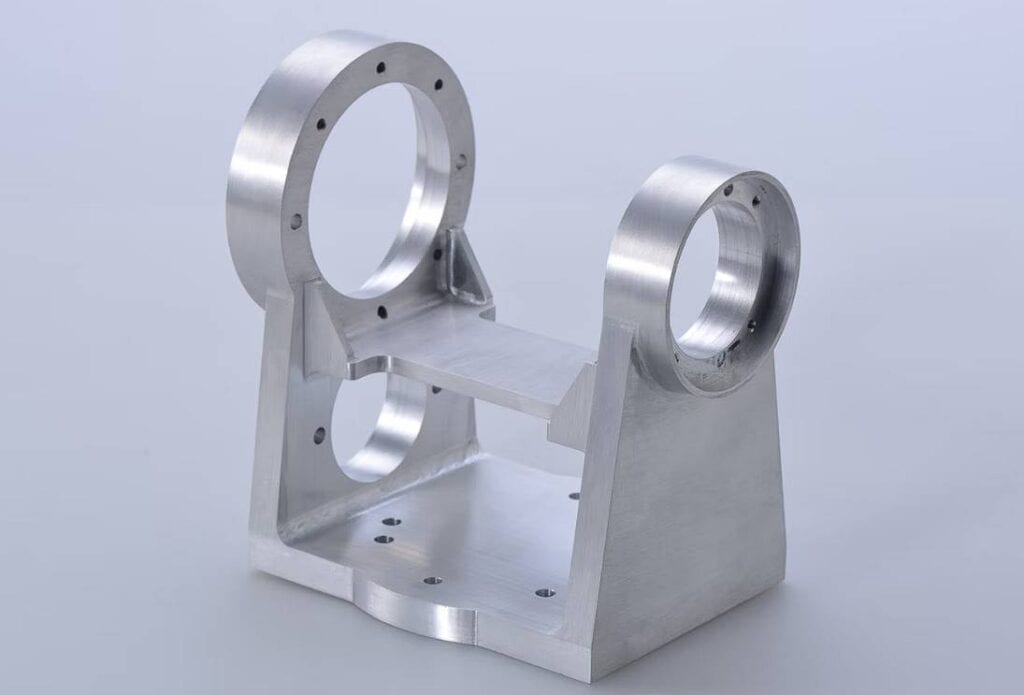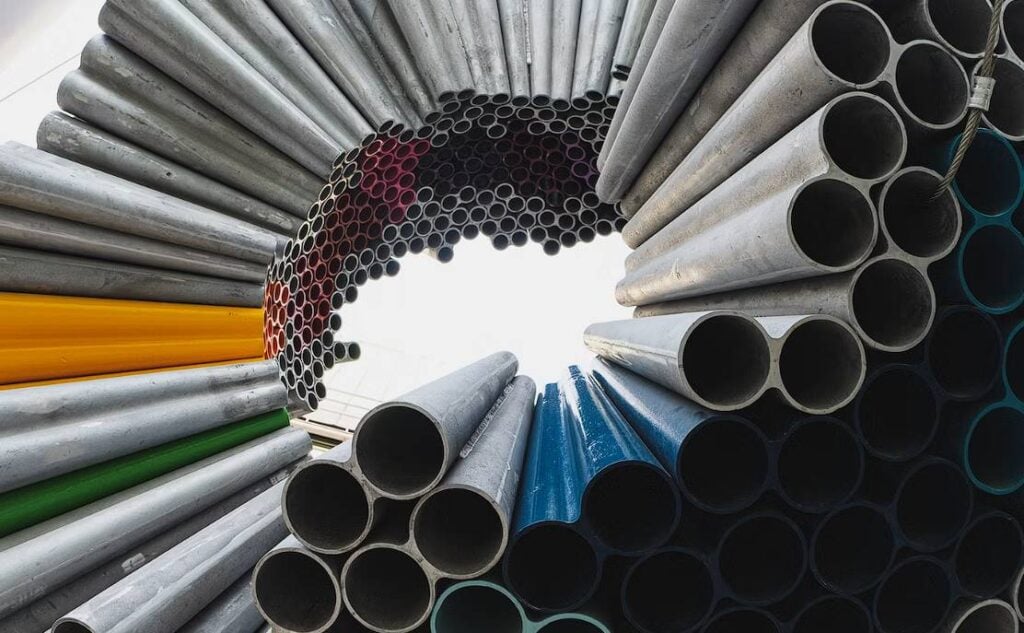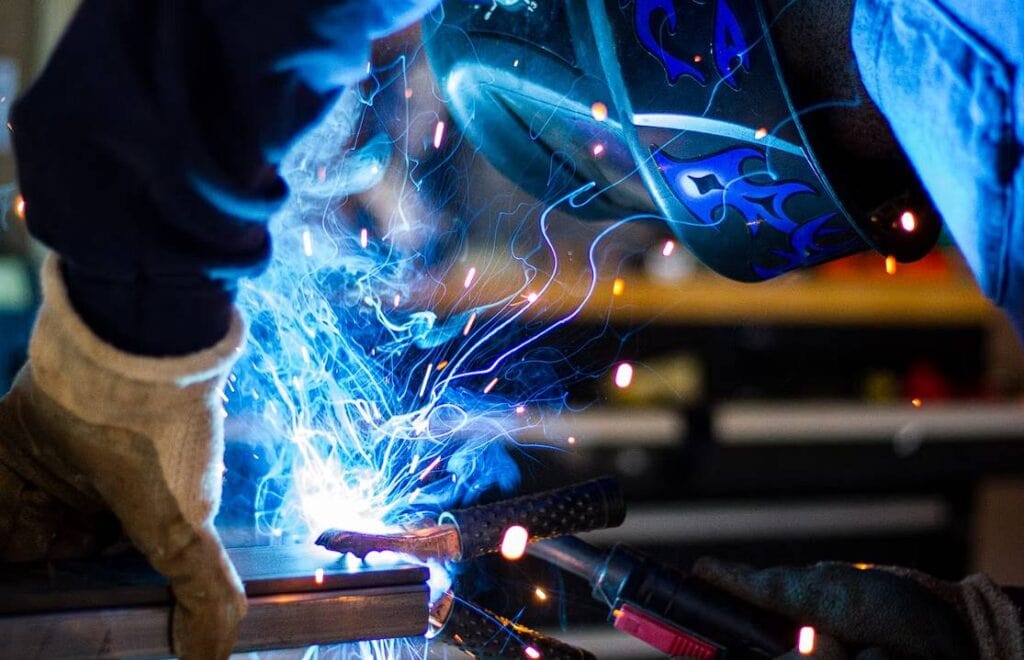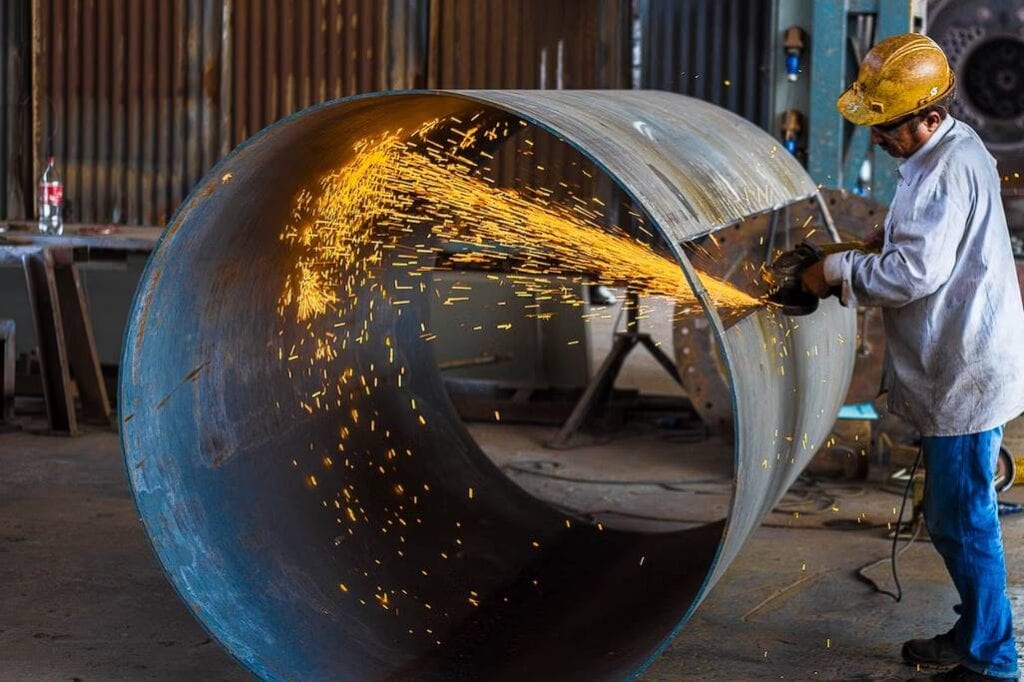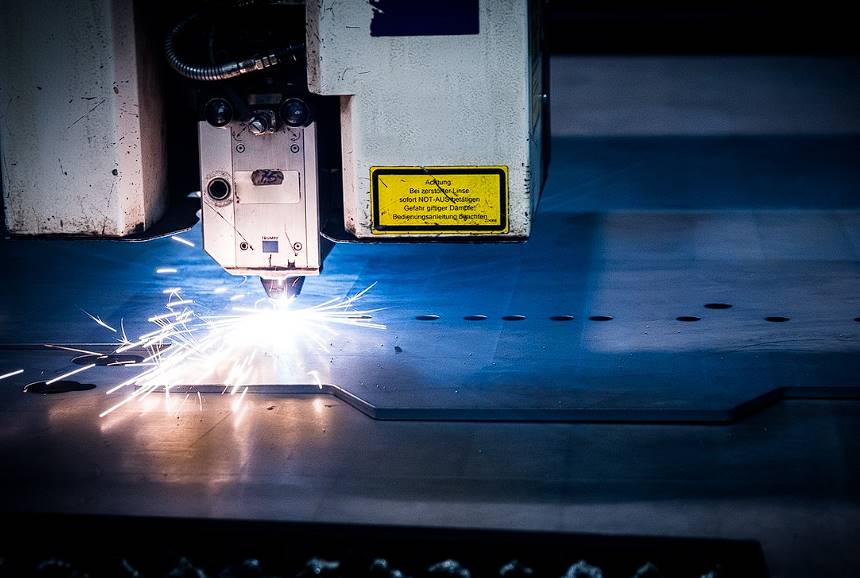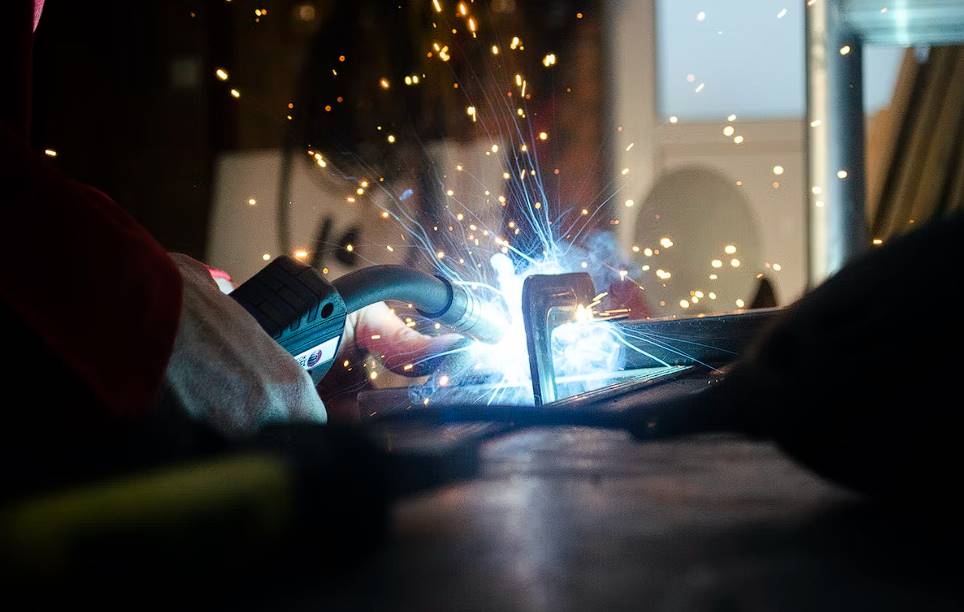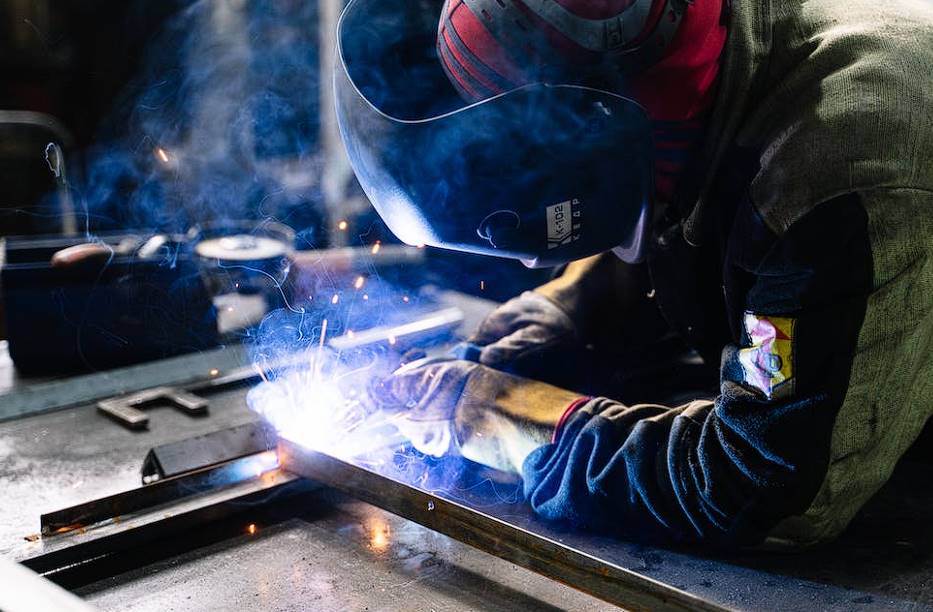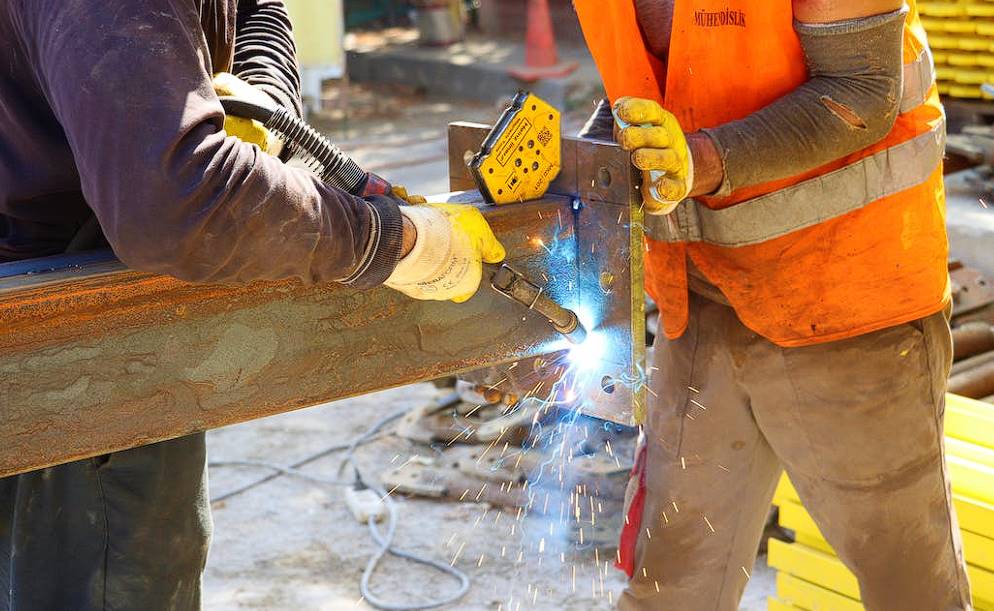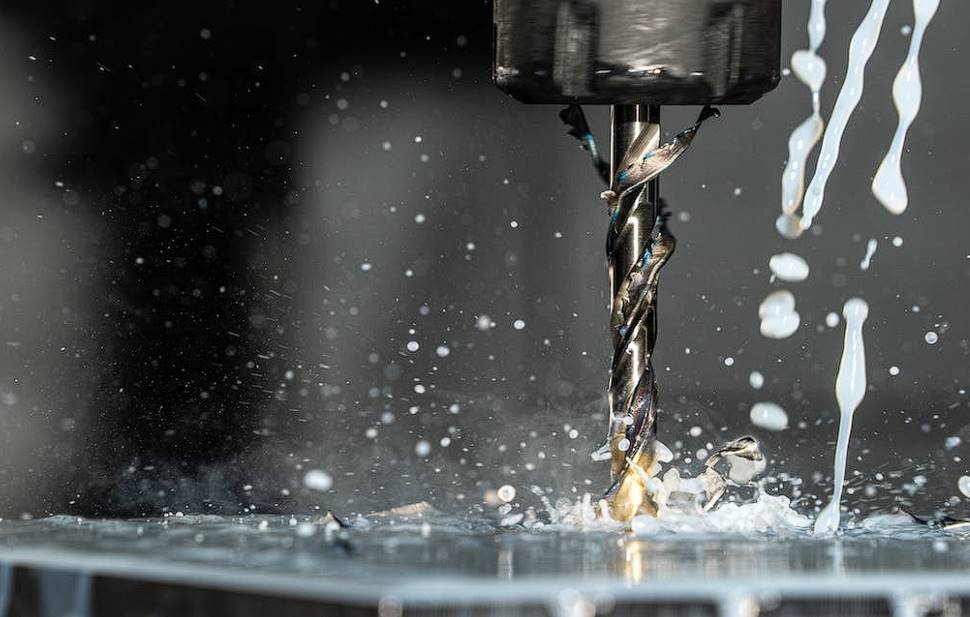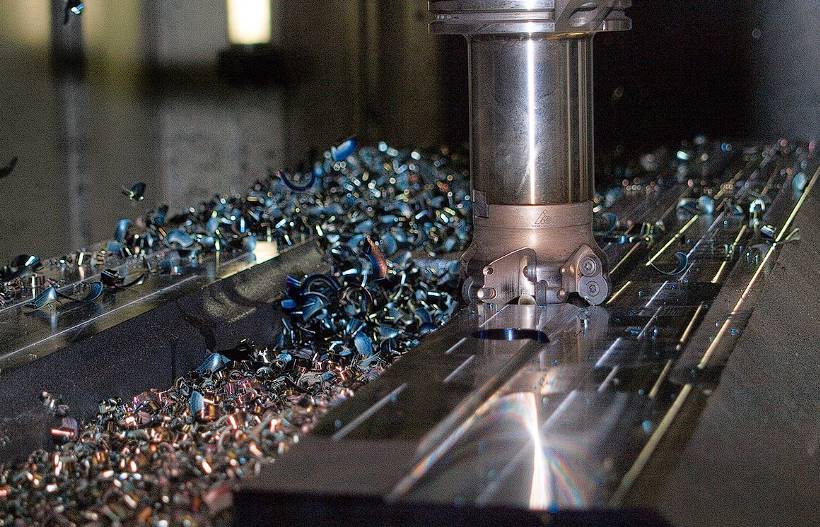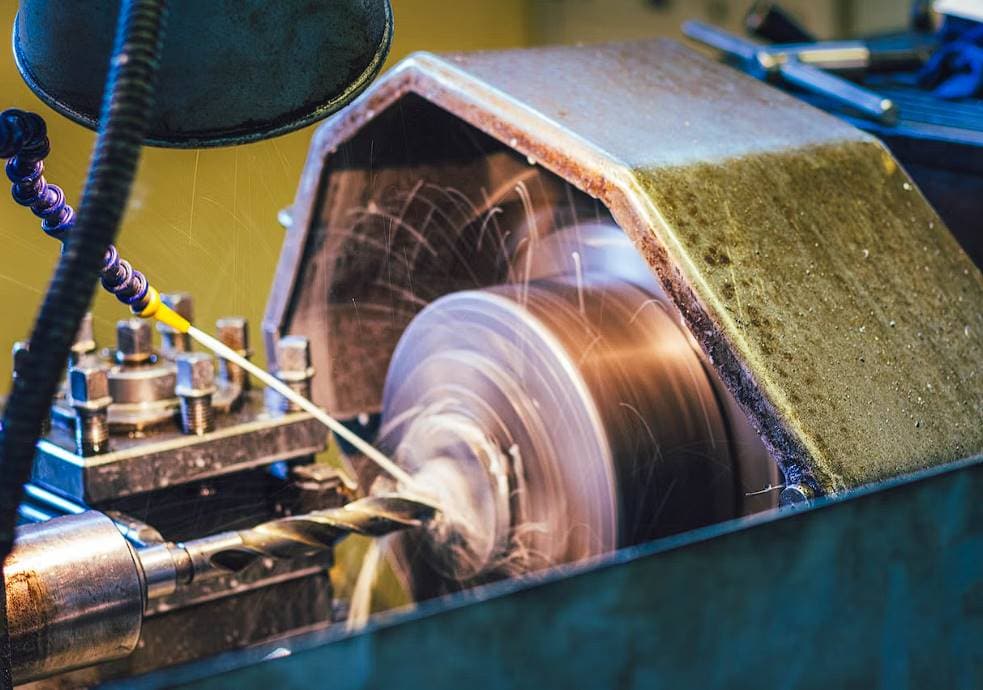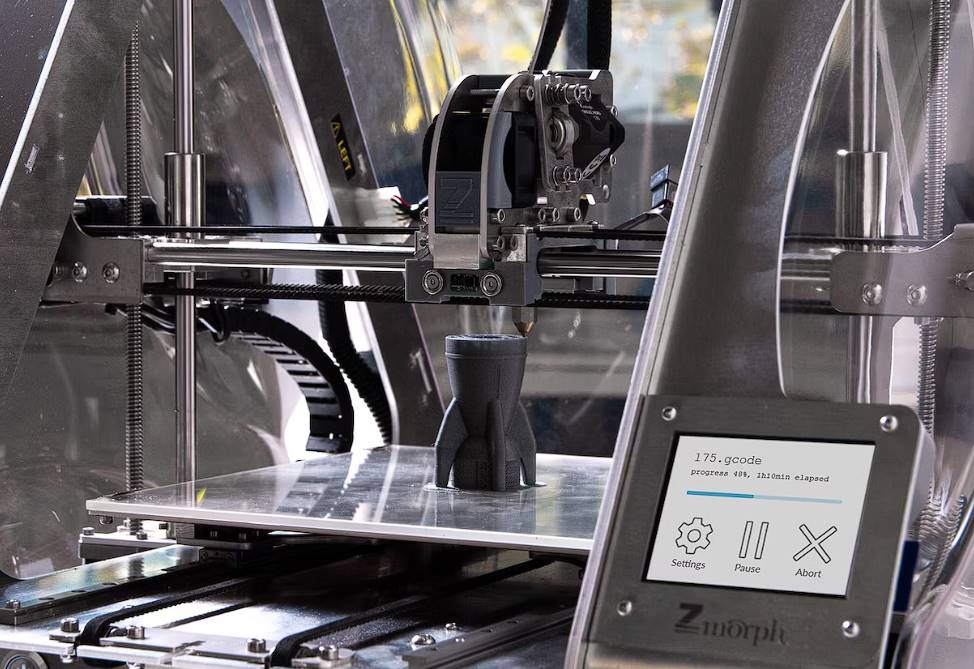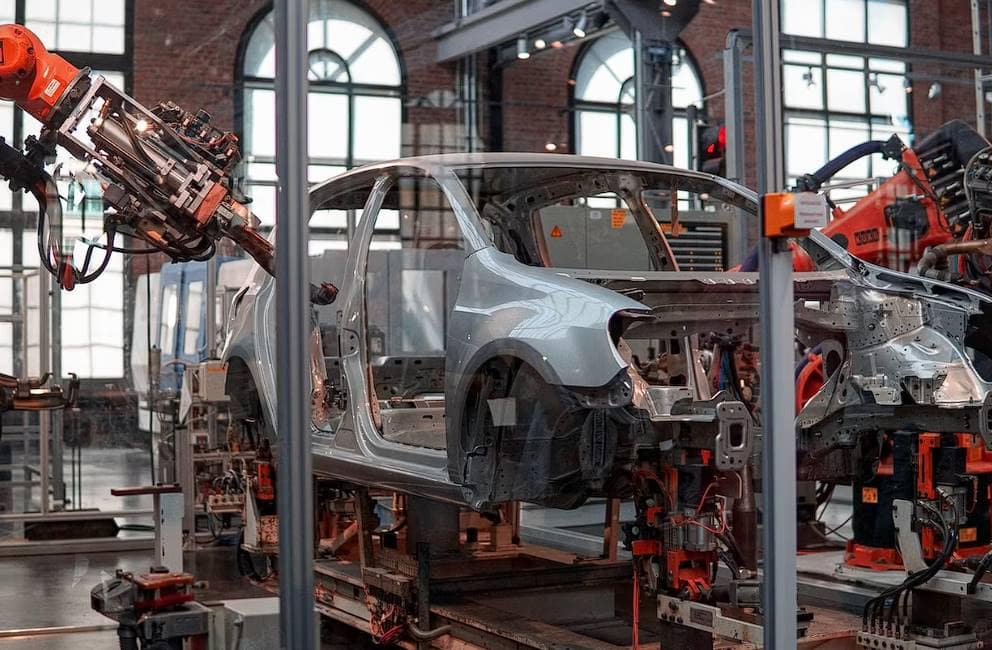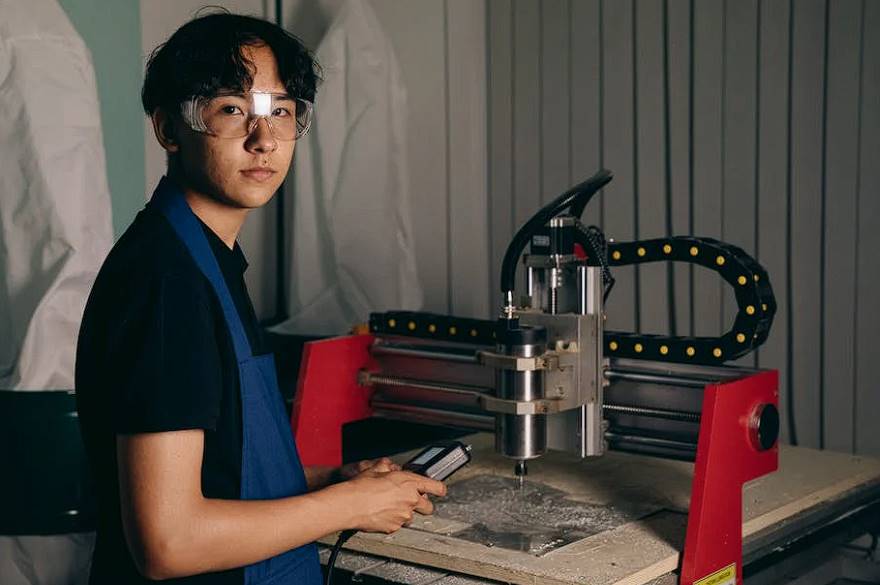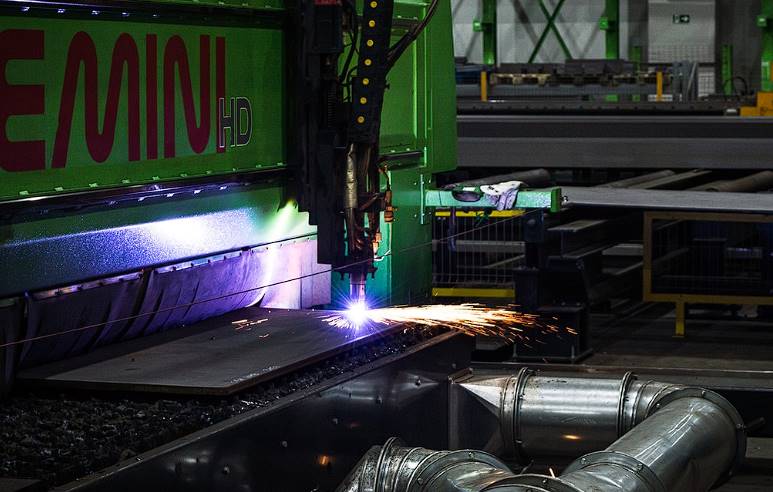Aluminium has several applications ranging from the building trades to the aerospace industry. Its unique properties and numerous benefits make it a fantastic metal for industrial use. In this post, we'll look at why aluminium has become so widely used in manufacturing and what benefits come with that. We'll go through all its benefits, from being portable and long-lasting to cheap and eco-friendly. But first, let's look at aluminium's universe and see why it's so popular in the fabrication industry.
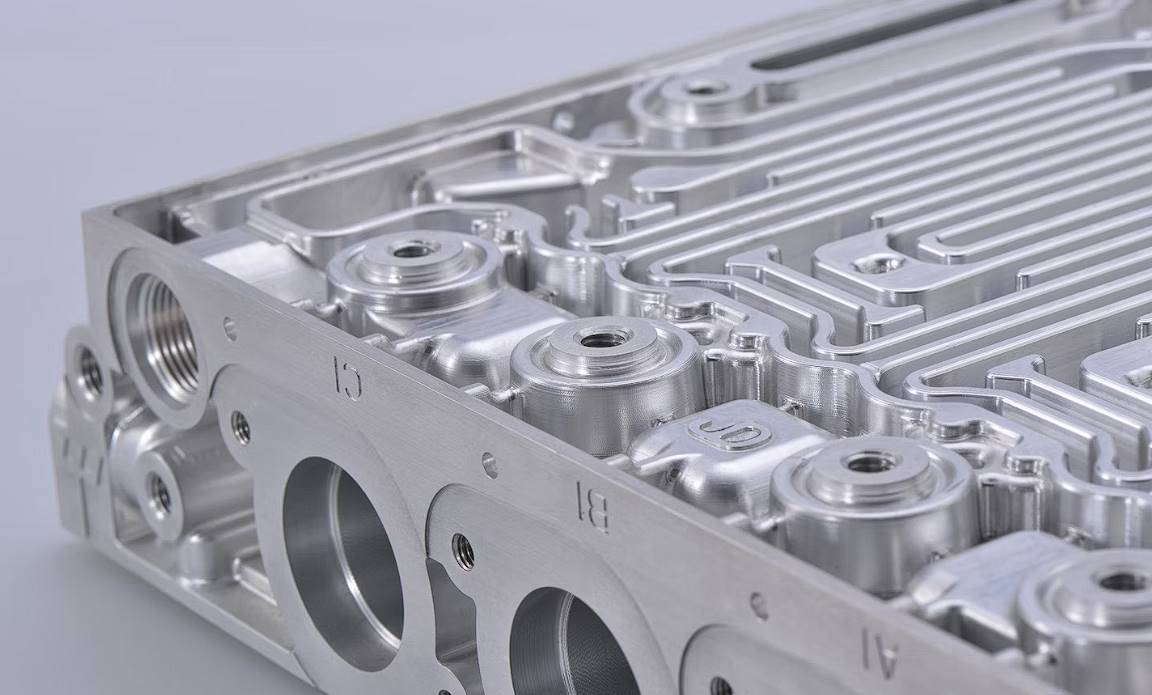
What Is Aluminium Fabrication?
Bauxite, a red clay-like rock, is where aluminium is extracted from the ground. First, alumina is extracted from raw bauxite by processing; the alumina is then dissolved in molten cryolite, which prepares the alumina for electrolysis, and the alumina is then shaped into aluminium sheet metal, plate metal, tubing, and other forms. At this point, raw aluminium can be bought and traded, which is available in any developed country.
Now that the aluminium is in place, fabrication can begin. Aluminium is fabricated by forming, welding, or sawing it with industrial machines to achieve the desired form. Computer-aided design (CAD) and computer-aided manufacturing (CAM) applications are commonly used to design the predetermined shape.
Aluminium Fabrication Methods
The complexity of the part design, the intended use, and the final product's size all play a role in deciding which aluminium fabrication method is best. Cutting, welding, shaping, and hole creating are just some of the main aluminium fabrication procedures utilised to create the final product. Methods of production in this context include:
Forming
Aluminium undergoes forming techniques such as bending, rolling, and stamping to achieve desired forms. Aluminium is formed using a bending machine and then stamped using stamping press equipment.
Welding
Using a welding flame, aluminium parts are melted and joined to form the desired structure. A wide variety of welding techniques can be used to create aluminium. Methods such as these include:
- Stick welding entails using electrodes to lay the weld, and while it is not commonly used for aluminium, it is a common welding procedure for other materials. A welding flame fuses an electrode, and aluminium bits create a weld pool. A strong bond is created between metal components once the molten pool has cooled. Stick welding is the simplest and most basic form of welding, making it ideal for quick repairs in the field. A stick welder can be easily transported and utilised even in breezy conditions. Aluminium is joined together using this technique.
- Welding with metal inert gas (MIG) requires the employment of a spool gun to deposit the welding wire. To prevent oxidation of the welded surface, the spool gun sprays a shielding gas onto the weld while it extrudes an electrode. The quality and integrity of the weld will be compromised if oxidation or other contaminating gases are present.
- Tungsten inert gas (TIG) welding is a type of welding that derives its name from the consumable tungsten electrodes used in the operation. In this case, molten tungsten is combined with a filler metal to create the weld. Because the welder has such precise control over the whole TIG welding process, the resulting weld surface is typically of the highest quality.
Cutting
To make a clean cut in the aluminium, a lathe or CNC machine is used, with a cutting tool connected. Professional fabricators often use techniques designed specifically for cutting aluminium, such as:
- Aluminium can be cut with specialised industrial shearing equipment called a water jet shear. High-pressure water jets infused with an abrasive compound are used by this tool to slice through the aluminium. Water jet shearing produces a cleaner and more exact cut than welding and other heat-related cutting techniques.
- Aluminium components are sliced with laser cutting equipment to achieve the desired shape during the laser cutting process. When producing aluminium, laser machines use CAD models of the desired patterns to build the designs. Laser cutting is commonly used because it conserves energy, produces crisp edges, and prevents contamination of the aluminium material.
- Aluminium can be sliced into precise shapes with the help of a plasma cutter. The cutter uses high-velocity hot plasma jets to cut through aluminium, eliminating the most potential for contamination. In comparison to other methods, plasma cutting is fast and precise. The machine uses CAD files to cut aluminium templates.
Creating A Hole
Holes of differing dimensions and lengths may be necessary for different fabricated pieces. Various techniques can be used to fabricate aluminium with various hole sizes and shapes. The following methods create holes:
- Making a hole with a drill bit, also known as hole drilling. The drill bit revolves while being pressed firmly against the workpiece. The drilled hole may need to be adjusted to get the desired size.
- After a pilot hole has been drilled into the workpiece, the hole-boring procedure can begin. A boring tool is used in the procedure. With each revolution, the boring tool is fed a tiny bit of metal from the workpiece. When you need exact measurements for your project, hole boring is the way to go.
- To accommodate a cap screw or bolt threaded into the hole, threads must be cut inside the hole, a procedure known as tapping. Turning, milling, tapping, and even doing it by hand are all viable options. This method can also be used to thread nuts. A tap is a thread-cutting tool, so named because its cutting edges resemble threads. When screwed into the hole, the tap cuts internal thread while removing extraneous metal.
The Aluminium Benefits And Features
Aluminium shares similarities with the metals steel, brass, copper, zinc, lead, and titanium on the physical, chemical, and mechanical levels. It conducts electricity and behaves similarly to other metals when melted, cast, moulded, and machined. In truth, making aluminium is very similar to making steel.
Less Weight
Aluminum's specific gravity of 2.8 g/cm4 is roughly one-third that of steel, making it an extremely lightweight metal. Aluminium production is cheaper as a result. Using it in automobiles again lessens unsprung weight, boosts efficiency, and expands carrying capacity. Both noise and discomfort will be diminished as a result of this.
The alloy composition allows the material's strength to be tailored to the specific need. Aluminum-magnesium-silicon alloys, for instance, are excellent for car body sheets because they age-harden well after being painted with baked-on enamel. In contrast, aluminium-magnesium-manganese alloys are the optimal blend of formability and strength.
Resistance To Corrosion
A thin oxide layer forms naturally on aluminium, preventing it from further exposure to the atmosphere. It shines in settings where it will be exposed to corrosive substances, such as automotive and kitchen cabinetry. Except for marine magnesium-aluminium alloys, pure aluminium alloys are often less corrosion-resistant than pure aluminium. This quality can be enhanced even further with the use of suitable surface treatment, such as anodising, painting, or lacquering.
Thermal Conductivity And Electrical
Compared to copper, aluminium is about twice as good of a conductor for heat and electricity as it is for its weight. Because of this, aluminium is now commonly used for high-voltage power lines. It is also an excellent heat sink for many uses, such as computer motherboards and LED lights, that call for quick heat dissipation.
Reflectivity
Due to its low weight and high reflectivity, aluminium is ideally suited for use as a reflector in applications such as emergency lighting and thermal blankets. In addition, coated aluminium cool roofs reflect up to 95% of the sun's rays, making a home's interior much cooler in the summer.
Ductility
Aluminium has a low melting point, a low density, and is ductile. In its liquid state, it can undergo a variety of transformations. Aluminum's malleability makes it ideal for use at the last stages of product creation. Sheets, foil, geometric shapes, tubes, rods, and wires—aluminium can handle it all.
Cold-Temperature Strength
While steel quickly turns brittle when cooled, aluminium strengthens in tensile strength.
Odorless And Impermeable
Even though it's only 0.007 mm thick, aluminium foil is strong and airtight, so whatever you wrap in it won't absorb any of the flavours or aromas from the environment. Additionally, it blocks UV light.
The metal's inertness and lack of odour make it perfect for packing perishable goods like food and medicine. In addition, because aluminium can be recycled, it can be utilised in this process, further lowering the carbon footprint of food and drink producers.
Non-Magnetic
Due to its lack of magnetic properties, aluminium can be used to create electrical shieldings for applications such as computer discs, dish antennas, busbars, and magnet housings.
Non-Toxic
Aluminium, used to produce works, pressure cookers, and many other kitchen tools, is completely non-toxic. As a result, disinfecting is simple and won't let harmful bacteria into the meal.
Absorbing Noise And Impact
Ceilings made of aluminium are highly effective at dampening ambient noise. In addition, because of its ability to absorb impact, it is frequently utilised in car bumpers.
Non-Sparking
When aluminium touches itself or other non-ferrous metals, no sparks are created.
Recyclability
The recycled material is chemically and physically indistinguishable from the original aluminium. This significantly reduces the material cost, allowing its usage in production runs. In addition, aluminium recycling is incredibly efficient; the process only uses about 5 per cent of the energy needed to generate the primary metal in the first place.

Where Is It Used, And What Kinds Of Applications Does It Have?
Some of the many applications of aluminium will be discussed here.
Transportation
Due to its low density and excellent strength-to-weight ratio, aluminium finds widespread application in the transportation, aerospace, and maritime sectors. It's utilised to make car frames, motor parts, and wheel spokes lighter and more aerodynamic. Aircraft use aluminium for structural components like wings and fuselage to lessen their weight and increase their aerodynamic efficiency. Because of its durability in saltwater, it is commonly used for ship hulls, masts, and other structural elements.
Packaging
Because of its low weight, high strength-to-weight ratio, and high corrosion resistance, aluminium is widely utilised in modern consumer packaging. It is commonly found in beverage cans and pharmaceutical containers.
Construction
Aluminum's strength, flexibility, and corrosion resistance make it a useful building material. It is commonly utilised to construct houses, skyscrapers, and bridges. In addition, it's portability and low cost make it a useful building material. Lightening a building's load with aluminium helps keep foundational expenses in check.
Electrical Appliances
Aluminum's low weight and high electrical conductivity make it a popular material for use in electronics. It's a common component in motors, TV antennas, home appliances, and even satellite dishes. In addition, because of its low weight, high flexibility, and low corrosion risk, aluminium is frequently used for power lines.
Consumer Goods
Aluminium is commonly used in consumer goods due to its silvery, sleek appearance, resilience, low weight, and high thermal conductivity. For example, smartphones, televisions, and laptops all have aluminium cases due to the material's lightweight, attractive design and ability to keep electronics from overheating. In addition, aluminium is often used in cookware because of its durability, low weight, and high thermal conductivity, all of which contribute to more consistent cooking temperatures.
Equipment And Machinery
Aluminum's low density, high strength-to-weight ratio, and corrosion resistance make it a popular material for use in machine construction. For example, industrial machinery and equipment use it to construct frames and motion control devices. It's also a common material for industrial parts like sensors and conveyors.
Instruments In Medicine
Due to its low density and high tensile strength, aluminium finds widespread application in the medical device industry. In addition, the fact that it is biocompatible and won't rust on the human body makes it a good choice for surgical equipment and implants.
Conclusion
Aluminium is a popular metal for industrial use due to its unique properties and numerous benefits. It is fabricated by forming, welding, or sawing it with industrial machines. Computer-aided design (CAD) and computer-aided manufacturing (CAM) applications are commonly used to design the predetermined shape. Aluminium fabrication methods include cutting, welding, shaping, and hole creation. Forming involves bending, rolling, and stamping, while welding involves melting and joining aluminium parts.
Stick welding is the simplest and most basic form of welding, making it ideal for quick repairs in the field. A stick welder is used to join aluminium together. Welding with metal inert gas (MIG) requires the use of a spool gun to deposit the welding wire. Tungsten inert gas (TIG) welding is a type of welding that uses molten tungsten and filler metal to create the weld. Cutting is used to make a clean cut in aluminium, such as with a water jet shear, laser cutting, and plasma cutting.
Holes can be created with various techniques, such as making a hole with a drill bit. The hole-boring procedure is used to drill a pilot hole into a workpiece. To accommodate a cap screw or bolt threaded into the hole, threads must be cut inside the hole, a procedure known as tapping. Aluminium is a lightweight metal with a specific gravity of 2.8 g/cm4 and a resistance to corrosion. It is also a thermal conductor and electrical conductor, making it ideal for high-voltage power lines and heat sinks.
It is also reflective, making it ideal for many uses. Aluminium is an important material for many applications, such as emergency lighting, thermal blankets, and cool roofs. It has a low melting point, low density, and is ductile, making it ideal for use at the last stages of product creation. It is also odourless and impermeable, non-magnetic, non-toxic, absorbs noise and impact, and is chemically and physically indistinguishable from the original aluminium. It is also widely used in the transportation, aerospace, and maritime sectors, making car frames, motor parts, and wheel spokes lighter and more aerodynamic.
Aluminium is used in a variety of applications, such as aircraft, packaging, construction, electronics, consumer goods, machinery, and medical devices. It has a low weight, high strength-to-weight ratio, and corrosion resistance, making it a popular material for many applications. It is also biocompatible and won't rust on the human body, making it a good choice for surgical equipment and implants.
Content Summary
- Aluminium has numerous applications across industries, from building trades to aerospace.
- Aluminium fabrication involves extracting alumina from bauxite and shaping it into various forms.
- Forming, welding, and sawing are common aluminium fabrication methods.
- Forming techniques include bending, rolling, and stamping to achieve desired forms.
- Welding methods include stick welding, MIG welding, and TIG welding for joining aluminium parts.
- Cutting techniques for aluminium fabrication include water jet shearing, laser cutting, and plasma cutting.
- Various methods like drilling, hole boring, and tapping are used to create holes in aluminium.
- Aluminium has the benefits of being lightweight and portable, making it suitable for use in automobiles and other applications.
- Aluminium has a natural resistance to corrosion and can be further enhanced with surface treatments.
- It has high thermal conductivity and electrical conductivity, making it useful for power lines and heat dissipation in electronics.
- Aluminium is highly reflective and often used as a reflector in emergency lighting and thermal blankets.
- It is ductile and can be transformed into various shapes, including sheets, foil, tubes, rods, and wires.
- Aluminium exhibits increased tensile strength in cold temperatures, unlike steel.
- Aluminium foil is odourless, impermeable, and blocks UV light, making it ideal for packaging perishable goods.
- Aluminium is non-magnetic and can be used to create electrical shieldings and magnet housings.
- It is non-toxic, making it safe for use in kitchen tools and cookware.
- Aluminium absorbs noise and impact, making it effective in ceiling panels and car bumpers.
- When aluminium comes in contact with non-ferrous metals, it does not create sparks.
- Aluminium is highly recyclable and can be chemically and physically indistinguishable from the original material.
- Aluminium is widely used in transportation, including car frames, aircraft components, and ship hulls.
- It is commonly used in consumer packaging, such as beverage cans and pharmaceutical containers.
- Aluminium is a useful building material for construction projects, including houses, skyscrapers, and bridges.
- It is popular in electrical appliances, such as motors, TV antennas, and power lines.
- Aluminium is frequently used in consumer goods like smartphones, televisions, and cookware.
- It finds application in equipment and machinery construction, including frames and industrial parts.
- Aluminium is utilised in the medical device industry due to its low density, strength, and biocompatibility.
- Aluminium fabrication offers cost savings due to its lightweight nature and recyclability.
- The use of aluminium in fabrication reduces unsprung weight, increases efficiency, and decreases noise and discomfort.
- Aluminium's corrosion resistance and low maintenance make it suitable for various environments, including automotive and kitchen cabinetry.
- The versatility and desirable properties of aluminium contribute to its widespread use in manufacturing and fabrication processes.
Frequently Asked Questions
Yes, aluminium can be easily customised to specific design requirements through a range of fabrication processes, such as extrusion, casting, and stamping.
Using aluminium in fabrication can often lead to cost savings in the long run due to its durability, low maintenance requirements, and the ability to recycle the material.
Aluminium is highly durable and can resist corrosion and wear, making it a popular choice in many industries, including construction, aerospace, and automotive.
Aluminium is often used in the production of lightweight vehicles, solar panels, packaging materials, and consumer electronics due to its unique properties.
When choosing aluminum for a fabrication project, factors to consider include the specific application, the required strength and durability, the fabrication method, and the desired aesthetic finish.

